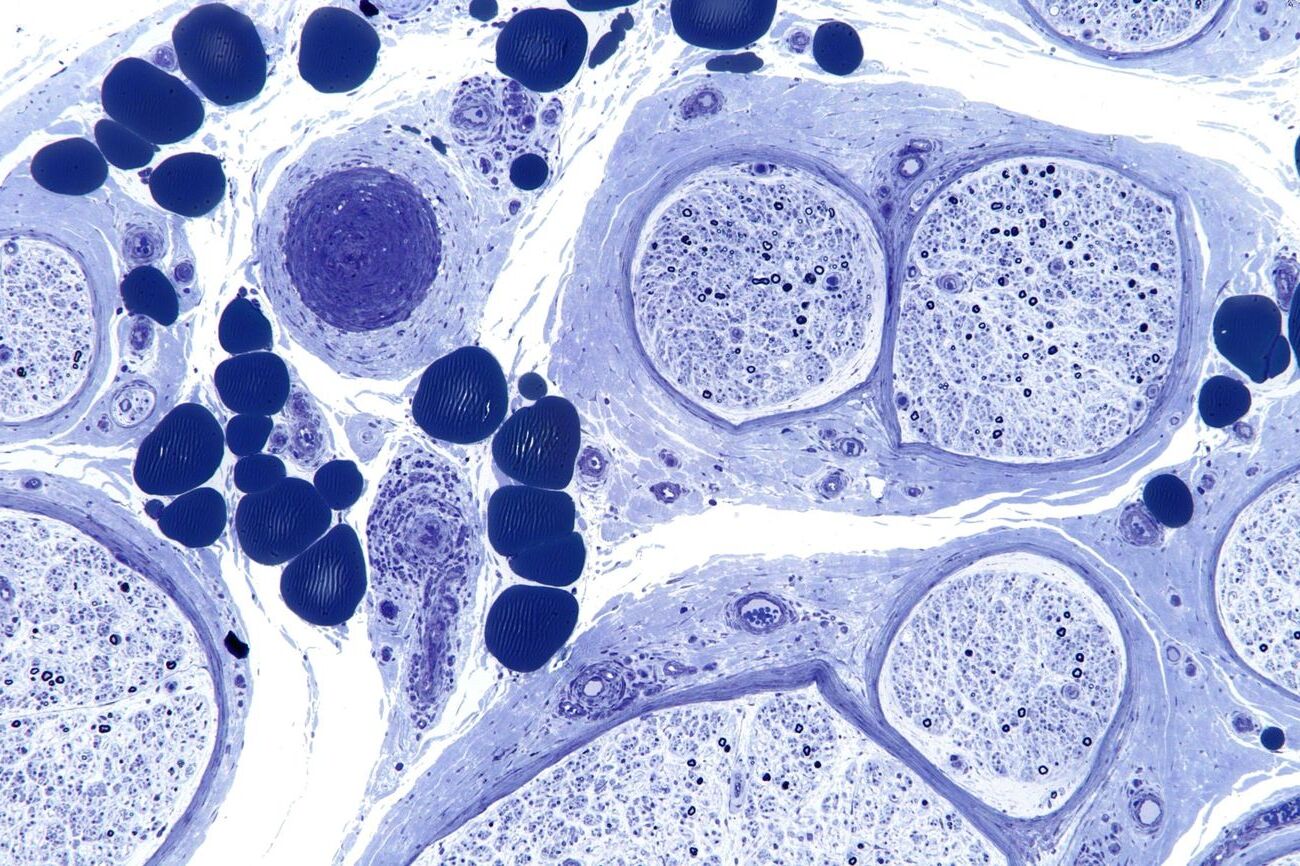
What happens when your immune system mistakenly attacks your own nerves? Autoimmune Peripheral Neuropathy is a condition where the body's immune system targets the peripheral nerves, causing a range of symptoms from mild tingling to severe pain and muscle weakness. Affecting millions globally, this condition can stem from autoimmune diseases like lupus or rheumatoid arthritis. Symptoms vary widely, including numbness, burning pain, and even paralysis. Diagnosing it can be tricky due to its many forms, but treatments focus on managing the underlying cause. Understanding this condition is crucial for improving patient outcomes and quality of life. Let's dive into 20 essential facts about this complex disorder.
Understanding Autoimmune Peripheral Neuropathy
Autoimmune peripheral neuropathy is a condition where the immune system mistakenly attacks the peripheral nerves. This can lead to a range of symptoms and complications. Let's dive into some key facts about this condition.
-
Definition and Prevalence: Peripheral neuropathy affects the nerves outside the brain and spinal cord. Over 20 million people in the U.S. have some form of this condition.
-
Types of Peripheral Neuropathy: There are more than 100 types, classified into mononeuropathies (one nerve) and polyneuropathies (multiple nerves).
Causes and Symptoms
Understanding what causes autoimmune peripheral neuropathy and recognizing its symptoms is crucial for early diagnosis and treatment.
-
Causes of Autoimmune Peripheral Neuropathy: Autoimmune diseases like Sjogren's syndrome, lupus, and rheumatoid arthritis can trigger this condition by attacking the body's own tissues, including nerves.
-
Symptoms of Peripheral Neuropathy: Symptoms vary from mild to severe, including numbness, tingling, muscle weakness, and abnormal sensitivity. Severe cases may involve burning pain, muscle wasting, and even paralysis.
-
Symptom Development: Symptoms can develop over days, weeks, or years. Some improve on their own, while others need specific treatment.
Inflammatory Conditions and Research
Inflammatory conditions and ongoing research play a significant role in understanding and managing autoimmune peripheral neuropathy.
-
Inflammatory Peripheral Neuropathies: Conditions like Guillain-Barré syndrome and chronic inflammatory demyelinating polyneuropathy (CIDP) involve the immune system attacking peripheral nerves, damaging myelin and weakening nerve signals.
-
Autoantibodies and Nerve Damage: Researchers study how autoantibodies cause nerve damage and how to block these effects. The AIRE gene is implicated in the immune attack on nerves in CIDP.
-
Tissue Engineering Approaches: Tissue engineering from donated cells helps identify problems in cellular components traveling along axons and nerve-muscle interactions, potentially leading to new treatments.
-
Pain Management Research: Scientists are exploring pathways that carry pain signals to the brain, aiming to block these signals and relieve neuropathic pain, fatigue, and other symptoms.
Clinical Trials and Resources
Participation in clinical trials and access to resources are essential for advancing treatment and care for autoimmune peripheral neuropathy.
-
Clinical Trials and Research Participation: Participating in clinical trials is vital for improving care. Diverse participants ensure study results apply broadly and treatments are safe and effective.
-
Resources for Information: Organizations like the American Diabetes Association, Charcot-Marie-Tooth Association (CMTA), and the Foundation for Peripheral Neuropathy offer resources, research, and care-management information.
Common Causes and Prevalence
Knowing the common causes and prevalence of peripheral neuropathy helps in understanding the scope of the condition.
-
Common Causes of Peripheral Neuropathy: Causes include trauma, infections, inherited conditions, diabetes, shingles, cancer, autoimmune diseases, and certain injuries. Risk increases with age.
-
Prevalence Among Older Populations: Globally, about 2.4% of people have peripheral neuropathy, rising to 5-7% among those aged 45 and older.
Types of Symptoms
Peripheral neuropathy can affect motor, sensory, and autonomic signals, leading to various symptoms.
-
Symptom Types: It affects motor signals (muscle control), sensory signals (feeling), and autonomic signals (automatic functions like sweating and blood pressure).
-
Motor Symptoms: Symptoms include loss of limb control, trouble speaking, and muscle weakness due to nerve cell damage controlling muscles and movement.
-
Sensory Symptoms: Symptoms include loss of sensation, such as feeling light touch or pain, due to damage to sensory nerves.
-
Autonomic Symptoms: Symptoms include disruptions in automatic bodily functions like breathing, heartbeat, digestion, and blood pressure control, which can be dangerous.
Diagnosis and Treatment
Accurate diagnosis and effective treatment are key to managing peripheral neuropathy.
-
Diagnosis of Peripheral Neuropathy: Diagnosing can be challenging due to many types. Techniques include electromyography (EMG), MRI, CT scans, and skin biopsies to detect nerve cell damage.
-
Treatment of Peripheral Neuropathy: Treating the underlying cause, like diabetes or infections, is most effective. If nerve damage is modest, patients may regain function and experience less pain. For many, neuropathy becomes a chronic condition requiring lifelong management.
-
Unique Approach to Treatment at Yale Medicine: Yale Medicine minimizes discomfort and offers the best chance to reverse the condition. They use comprehensive expertise and advanced equipment for successful diagnosis and tailored treatments.
Final Thoughts on Autoimmune Peripheral Neuropathy
Autoimmune peripheral neuropathy is a complex condition where the immune system mistakenly attacks the peripheral nerves. This can lead to a range of symptoms, from mild tingling to severe pain and muscle weakness. Understanding the causes, symptoms, and treatment options is crucial for managing this condition effectively. Research continues to explore new ways to block nerve damage and manage pain, offering hope for better treatments in the future. Participating in clinical trials can also contribute to advancements in care. If you or someone you know is affected by autoimmune peripheral neuropathy, seeking specialized medical advice and staying informed about the latest research can make a significant difference. Remember, managing the underlying cause is key to improving symptoms and quality of life. Stay proactive and engaged in your healthcare journey.
Was this page helpful?
Our commitment to delivering trustworthy and engaging content is at the heart of what we do. Each fact on our site is contributed by real users like you, bringing a wealth of diverse insights and information. To ensure the highest standards of accuracy and reliability, our dedicated editors meticulously review each submission. This process guarantees that the facts we share are not only fascinating but also credible. Trust in our commitment to quality and authenticity as you explore and learn with us.


